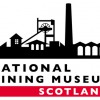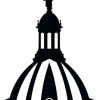
Explore 14,000 years of rural and small-town life in Upper Clydesdale. Discover the people who have lived and worked here from prehistoric times up to the mid-20th century. Alexander Moffat, Ruth Nicol and Alan Riach introduce their paintings and poems and Hugh MacDiarmid's Brownsbank years, 1951-1978.
Free Entry but donations to MacDiarmid's Brownsbank. A public talk with Beth Junor, editor of The Letters of Valda Grieve (Edinburgh: Word Power Books, 2007), and the artists, Alexander Moffat, Ruth Nicol. Biggar Museum Trust aims to collect, store, preserve and record Biggar and Upper Clydesdale's rich archaeological, social and historic heritage.
Free Entry but donations to MacDiarmid's Brownsbank. A public talk with Beth Junor, editor of The Letters of Valda Grieve (Edinburgh: Word Power Books, 2007), and the artists, Alexander Moffat, Ruth Nicol. Biggar Museum Trust aims to collect, store, preserve and record Biggar and Upper Clydesdale's rich archaeological, social and historic heritage.
Services
Visit Biggar Museum and you'll be surprised by how much "bigger" it is on the inside! The museum's modest exterior hides extensive collections spanning 14,000 years of rural life in Biggar and Upper Clydesdale. Described by one Trip Advisor reviewer as "a small museum packing a mighty punch" you can expect your visit to be an extra special one.
By Car: Biggar is on the A702, 30 miles southwest of Edinburgh and 10 miles southeast of Lanark. From the south, Biggar is 15 minutes from the M74 junction 13 at Abington. Groups, of any age, are welcomed and can make an appointment to visit out-with the usual opening hours. We can assist those bringing children's groups (Scouts, Out-of-School, Care Groups), youth groups, community groups and older adults such as those from care homes.
The oldest open-air site in Scotland was discovered by archaeologists in Howburn, near Biggar. It dates to the last phases of the last glacial period, the Devensian Epoch, and provides insight into the lives of Late Upper Palaeolithic hunters. This report from Biggar Archaeology Group describes the site and its many finds.
Neolithic Farmers made & used a variety of tools including arrowheads which were fixed to the end of a shaft & fired from long narrow bows. Axeheads were inserted into a hole in a wooden shaft. They were used for practical purposes such as clearing land for farming or to chop down trees to use for building.
Bastle houses (fortified farmhouses) are a fascinating historic feature of the borders area and were used by farmers to provide security against border reivers (raiders). Five bastle houses in Upper Clydesdale and surrounds have been excavated by member of Biggar Archaeology Group. Windgate House was the first bastle house to be excavated in Scotland.
Reviews (12)
Sandra Marks
Oct 25, 2021
Report
Alison Lowrie
Oct 05, 2021
Report
Alison
Aug 23, 2021
Report
Jayne Smith
Aug 12, 2021
Report
Sarah Bunney
Nov 17, 2019
Report
Beautifully done and very interesting museum! My Dad & I stumbled across it on a recent trip to Scotland as we have ancestry from Biggar. Museums aren't typically our go-to, but we were so very glad we stopped in. A highlight of our trip for sure! And the receptionist was just lovely. Would highly recommend!
Lindsey Bramall
Oct 22, 2019
Report
Jayne Wilson
Sep 27, 2019
Report
Elspeth Roden
Jul 03, 2019
Report
Rianna Safdar
Feb 11, 2019
Report
The staff was incredibly helpful with interesting facts and future events. There is a old time street showing what shops would have been like in the 1900s. The exhibitions are fun and you can interact with an… old fashion telephone exchange. You can also reuse your ticket to revisit within a month of purchase. Cute little gift shop too.
David Wardrop-White
Nov 17, 2018
Report
Julia Jules Gray
Aug 27, 2018
Report
William John Smail
Nov 25, 2017
Report


